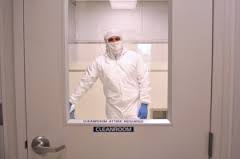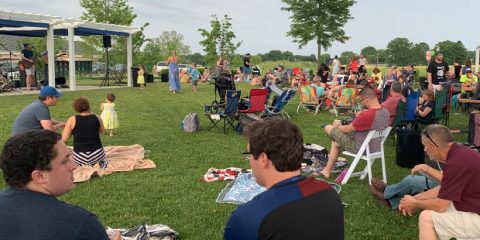Fallacy in Pharma, It’s a New Day for Delaware

The Astra Zeneca restructuring in Delaware was a big blow, but it wasn’t news. When Delaware set out on an economic development strategy to encourage AZ, as did many other states, their motives were good and their logic sound. But nearly minutes after the strategy was launched, the market around the life science industry began to shift, much like when the market shifted the day Betamax woke up to a world filled with DVDs. And like the Betamax revolution, it looks like the changes in the life science industry are here to stay.
The advantage of having an economy built around life sciences should be obvious. We are a state steeped in the sciences. Former DuPont CEO Chad Holliday once called us, “The Science State”. In addition to having a perceived leg up on surrounding states because of an existing employment base, our Universities are leaders in research and development. And the result of such and economy is high paying jobs with an intellectual pathway for our youth from kindergarten through doctoral programs.
But our strategy, once valid, needs structural adjustments. The old idea of suburban single-company research centers, where life science companies shield themselves to protect their intellectual product, is gone. Their campuses are now dinosaurs, victims of their own success. When a variety of new and effective drugs emerged on the market from the 1980s thru approximately 2005, the stockholders and financiers wanted a “second round.” But costs were unbearable. According to Michael Bowman, Chairman and President of the Delaware Technology Park and former Chairman of the National Association of University Research Parks, “costs of developing a new drug were reaching $2 Billion and could take 8 years to develop. The worst part is that it often took $1.5 Billion before they knew if they had a good, safe and marketable product.” According to Bowman, one of the contributing compounding factors is the fact that the market for drugs is getting smaller. Not that the world is getting healthier and the population shrinking, but that the demand for mass market drugs has shrunk and the demand for person specific treatment has emerged. No longer will one unique drug (and a $2 Billion investment) be able to be marketed around the world. Research has shown that many drugs are safer and more effective when they are targeted to a geography, culture, diet, gene pool, etc… Therefore, micro markets have emerged. And the delivery model of research, development, trials, production and sales has changed with it.
 The challenge for Delaware is to bridge the gap between a small research firm, with lower cost structures and the ability to rapidly respond to the micro markets and the large life science companies who may already be sitting on potentially remarkable technologies and the distribution pipeline to respond to successes. The larger companies have already adapted and are subcontracting R & D. But in many cases, they are doing this outside of Delaware. What is missing from our economy is the influx of entrepreneurs and researchers to fill this gap, putting Delaware at the center of emerging technologies.
The challenge for Delaware is to bridge the gap between a small research firm, with lower cost structures and the ability to rapidly respond to the micro markets and the large life science companies who may already be sitting on potentially remarkable technologies and the distribution pipeline to respond to successes. The larger companies have already adapted and are subcontracting R & D. But in many cases, they are doing this outside of Delaware. What is missing from our economy is the influx of entrepreneurs and researchers to fill this gap, putting Delaware at the center of emerging technologies.
Again, the good news is that Delaware is sitting on a great infrastructure for the development of intellectual capital. Also, with our size, we can be nimble, rallying the attention of our state, business and education leaders in short order. And in many ways we have begun. At the University of Delaware, for example, we have shown enormous success at the Delaware Technology Park, adding thousands of jobs to Delaware’s economy. According to Andy Lubin, who is leading the University’s effort at the former Chrysler plant, now called the Science, Technology & Advanced Research (STAR) campus, “The University has begun this idea of bridging. We have employed a private developer to create buildings; we have been working with the Aberdeen Proving Grounds and identified the need for sophisticated prosthetic device development; our school of applied research and technology is developing devices and is now working with our physical therapy students, Christiana Care and The Jefferson Health Systems. Ultimately, we should expect to see our students, or others, observe our outcomes and turn it into a marketable technology.”
The next steps? There are many, and it may be an oversimplification, but it may just boil down to two things, people and places. Please join me to explore a solution that I call: Igniting the economic powder keg in Delaware.
(Related Post: The Intellectual Center Development Act)
(Related Post: Creating Place for Economic Development)


